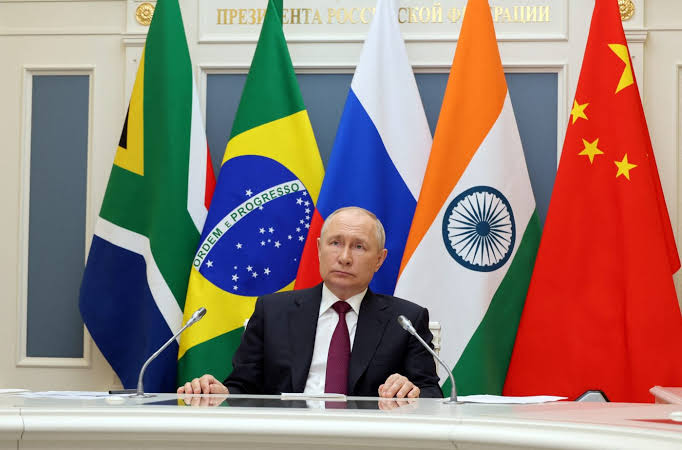BRICS profile and expansion stages

The BRICS+ countries account for 46% of the world’s population (8.1 billion)
In 2023, the share of the BRICS countries’ GDP, according to the World Bank, was 26% (that of the G7 countries – 43.7%) and the real (purchasing power parity, PPP) GDP – 31.5% (G7 – 30%); 70% of the contribution to the total GDP of BRICS was provided by China. India accounted for 13%, Russia for 8%, Brazil for 7% and South Africa for 2%. After the expansion of the association, its share increased to 35% of the global GDP at PPP.
Also, the accession of new countries to BRICS has resulted in an increase in the group’s share in global oil production (according to the State Bank of India’s calculations, from 18% to 40%), which makes significant changes to the global payment system and world oil prices.
The BRICS+ countries account for 46% of the world’s population (8.1 billion).
BRICS was established in 2006 at the initiative of Russia. Its co-founders were Brazil, Russia, India and China. The acronym BRIC was derived from the names of the association’s member countries in English. After South Africa joined them in 2011, the association was named BRICS. At the first summit in Yekaterinburg in June 2009, its goal was defined as “the development of consistent, active, pragmatic and open dialog and cooperation between countries.” Later, such principles of activity as non-bloc character and non-directedness against third parties were agreed upon.
At the meeting of the quintet’s foreign ministers in May 2022, held by video link, China came up with an idea of launching a process of BRICS expansion, with the aim of increasing its membership and influence in the world.
By August 2023, about 20 countries had applied to join the organization.
At the 15th summit held in Johannesburg (South Africa) on August 22-24, 2023, it was announced that six countries – Argentina, Egypt, Ethiopia, Iran, Saudi Arabia, and the UAE – would join the organization. However, in December 2023 Argentina changed its mind (after President Javier Milei came to power), while the other countries became full members of BRICS on January 1, 2024. The association received the unofficial name BRICS+.
No official procedure of accession is described. In discussing candidates for inclusion in the association, the authority of the applicant country and its position in the international arena are assessed. All BRICS members were in favour of admitting like-minded countries, “that believe in multipolarity and in the need for more democratic and fair international relations.”
At the moment, about 30 countries have applied for membership, including Algeria, Bangladesh, Bahrain, Venezuela, Pakistan, Malaysia, Kazakhstan and Azerbaijan. The authorities of these countries note that BRICS membership will enable them to more effectively address various issues on the world stage and defend their national interests.
BRICS does not have a secretariat or a charter. The rotating presidency is held by the summit’s host country. Leaders’ meetings are organized annually (the last one was on August 22-24, 2023 under the chairmanship of South Africa). Since 2013, the presiding country has been inviting countries close to it geographically and geopolitically to participate in the summits. Since January 2024, Russia has been chairing the organization. The summit will be held in Kazan on October 22-24.
Regular negotiations are held at the level of foreign ministers, finance, health, education, science and agriculture ministers, and secretaries of security councils. Since 2015, the BRICS civil, parliamentary and youth forums, as well as media summits have been held. Today there are more than 20 negotiating platforms within the BRICS framework, covering such areas as energy efficiency, climate change, food security, poverty alleviation, sustainable development, and the activities of international financial institutions.
Turkey too has applied for the full membership of BRICS.



